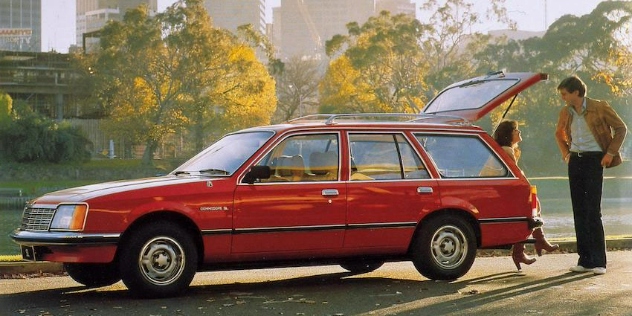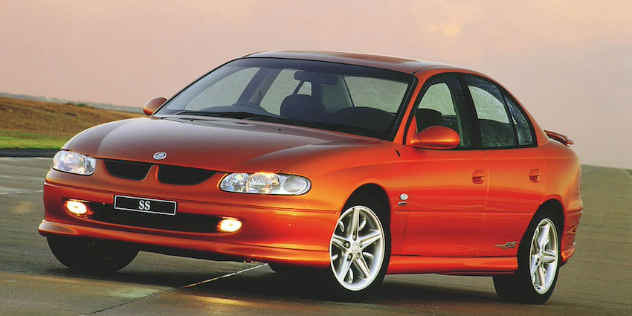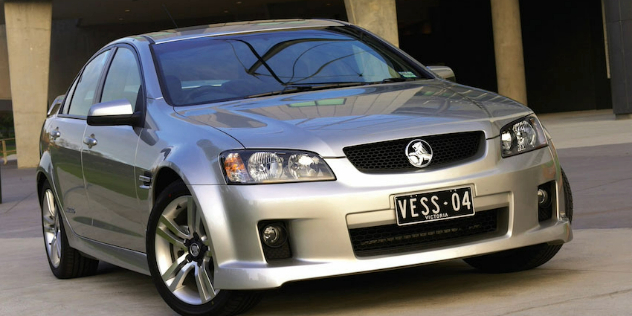
Australia's first mass-manufactured car arrived when the Holden 48-215 rolled off the production line in 1948. The car maker began life in 1856 as the saddlery business JA Holden & Co, but it was its merger with General Motors in 1931 that sowed the seed of ‘Australia’s Own Car’. At the time of its launch, Australian motorists mainly drove British and American cars, but they quickly embraced the local nameplate, and soon there were buyer waiting lists of more than a year.
In our January 1, 1949 issue, Open Road was “pleased to present to members its report upon performance and design of the new Australian-built car” and published a thorough road test that stated: “From impressions and data gained on the recent tryout over the pre-war course, the main conclusion is that the first Australia mass-produced car is a real success and lovely to drive
.
The impact on local manufacturing was immediate. Three hundred Australian companies supplied components, parts, materials and services for the first Holden. Ten years later, such was demand for Holdens, that figure grew to almost 4000. At its peak in the 1970s, with the mighty Kingswood rolling off plants all over the country, the company used 5000 local and overseas suppliers. Holden had assembly plants in every state of Australia, as well as in New Zealand and South Africa.
But 69 years after Australia’s first car was born, the closure of the Elizabeth manufacturing plant in South Australia on October 20 will bring the dream of a locally-built car to an end. The sun may be setting on the Holden empire, but it will always be an indelible part of Australian history and will still have a presence in Australia beyond 2017, with a national sales company and a national parts distribution centre.

As the ‘car made in Australia for Australia’, Holden’s 48-215 (commonly known as the FX) was the source of much national pride. Before the turn of the decade, and into the ’50s, the FX and then FJ sedans, panel vans and ute models, were finding homes in driveways of new suburbs and streetscapes throughout Australia and providing mobility to a new generation. A new body shape, the FE, was followed by the FC in 1958, which made Holden a two-to-one market leader over its nearest rival.
A six-cylinder engine, known as the ‘grey motor’, powered the 48-215 and, with only minor changes, models up to the EJ. The beloved six-cylinder, a design that underpinned most Australian vehicles at the time, had a capacity of around 2.2 litres – similar to size in many small car and SUV engines today.
“Completely new in appearance, the latest Holden has greater power, improved road manners and more interior comfort.”

The Sixties saw Holden go through a period of fast growth and even faster cars. The introduction of the FB marked the start of the decade, with its American-inspired wraparound windscreen and tail fins. The EK closely followed it and was notable as the first model offered with an automatic transmission. The EJ came next and was a big departure from the EK in its appearance, with a lower roofline and a softer rear styling replacing the fins. The Premier debuted in the EK with luxury features (at the time) like leather trim, bucket seats, metallic paint and standard heater/demister.
Then, arguably just as iconic as the 48-215 and FJ, came the EH. It ushered in the famous Holden red motor – a 149ci six-cylinder (or more powerful 179ci version that formed the basis of the first sporty Holden, the S4). Power steering became an option for the first time. The rust prone HD and HR models followed and a larger 186ci found its way under the bonnet.
In 1968, the HK became the first model to offer a V8 engine, a US-sourced 307ci Chevrolet unit. The two-door Monaro was also launched and its marriage with the 327 and, later, 350 Chevrolet engines, heralded the start of the Aussie muscle car era.
“Important additions and product changes in the Holden are announced by General Motors. Most dramatic is the availability of two completely new engines to power the EH.”

In what’s best described as the ‘Kingswood decade’ (sorry Torana!), the all-new Kingswood made its 1971 debut. A myriad of transmissions, paired with local and imported six-cylinder and V8 engines, must have been a huge headache for workers at Holden’s assembly facilities, but certainly not for fans of the cars.
Around half a million Holden HQs were produced through to the mid part of the decade. The much-loved Holden one tonner commercial range commenced alongside the existing ute range. The HJ followed, with only the Australian-built 253ci and 308ci V8s and 173ci and 202ci sixes available. Then, in 1976, the HX range arrived and brought a raft of emission controls that effectively strangled engine performance.
The final version of the Kingswood arrived in 1977. The HZ was most notable for the introduction of Holden’s ‘Radial Tuned Suspension’ and for dragging the ageing design into the modern era until production ended in March 1980, which was also the year that the TV series Kingswood Country debuted.
“To sum up, this is a good family-type car that handles and rides better than previous models, but the test car appeared to be abnormally heavy on fuel.”
Our relationship with Holden can be traced back over 80 years, when Open Road would regularly comment on motoring issues relevant to NRMA Members. In 1937, for example, we reviewed a booklet from Holden about safer driving and gave it high praise.
The relationship was enduring, and in the early days Holden even produced special technical sheets exclusively for Patrols to assist them while attending roadside breakdowns of Holden vehicles.
The NRMA started moving away from British-made Patrol vans like the Morris Minor and Patrols first used Holden EJ panel vans in the early 1960s. A succession of models followed with the EH, HQ, HZ and, in more recent times, Holden Rodeos. It’s true to say that Holden vehicles helped assist Members in difficult times for many years.



As the curtain lowered on the Kingswood, Holden could see the winds of change blowing through consumer tastes, with concerns like fuel efficiency, standard features and reliability becoming bigger factors. GM’s European arm, Opel, was trouncing all comers with its new large car, the Rekord, and it was being considered as a basis for a world car. It wasn’t designed for a six-cylinder engine, however, and Australians wouldn’t buy their large cars with anything less.
Luckily, Opel already had plans for a larger model, the Senator, and Aussie ingenuity came to the fore, with Holden designers working it into the VB Commodore. Launched in late 1978, the VB was the first model to have rack and pinion steering and MacPherson strut front suspension.

By the mid 1980s, vehicles needed to run on unleaded petrol, something the old 202ci six, with origins stretching back to the EH, couldn’t manage. It was an era when manufacturers shared the love, so to speak, and the VL Commodore became the recipient of Nissan’s new 3.0-litre six-cylinder/four-speed auto. It was a masterstroke, and many believe it ranks alongside the FJ and EH as a seminal model.
“It is a car with many good features, some design problems and a fault or two… with further attention to a few of the matters commented on in this report, the Commodore, in all its options, will offer an interesting alternative to current model ranges.”

Concerns around fuel consumption and emissions abated somewhat in the 1990s and Australian buyers were looking again at larger vehicles. The wide-bodied VN range was born and was based on the previous generation to a large extent, although the silky-smooth Nissan six went, replaced with a 3.8-litre Buick V6 and four-speed auto. V8 engines, including Holden’s most powerful 165kW fuel-injected unit, cemented themselves back in the line-up, pleasing fans.
In 1997, Holden invested $600 million in the new VT range, which was almost totally new from the ground up. The engine and transmission, with a few minor changes, were carried over, but it featured a wider track, better steering, improved build quality and, importantly, the models were much safer.
“The VT is more than 160kg heavier than the VS, so it accelerates with slightly less enthusiasm… Inside, the new Commodore is a generation ahead of the old in aesthetics and driver friendly design.”

By 2002, Holden’s Ecotec V6 engine was struggling to meet future emission targets, despite its reasonable fuel consumption on the open road. The more sharply-styled VY was the last to use the Buick-based engine and, while Holden was investing huge dollars in its upcoming fourth-generation ‘billion-dollar baby’ VE Commodore, it was the VZ that first ushered in the new Alloytec V6 engine and transmission package.
In mid-2006, the VE debuted and would be the first Commodore designed from the ground up by Australian engineers – a fact not lost on some of the senior design group at the time. Striking new looks, electronic stability control, the most powerful V8 ever offered in a Holden and a five-star ANCAP safety rating all amounted to a big step forward.
The VF came in 2013, complete with an eight-inch LED infotainment screen, self-parking system, electric handbrake and a better interior. October 2016 saw the introduction of the VF Series ll, and a 304kW/570Nm V8. The VF’s chassis was fine-tuned, possibly for the last time.
“The [VE] is a good performer, most notably around town where it felt a lot sharper and responsive compared to the VZ… [It] has the freshness in design, refinement and handling qualities to compete in a market where sales volumes are shrinking and there is more competition.”